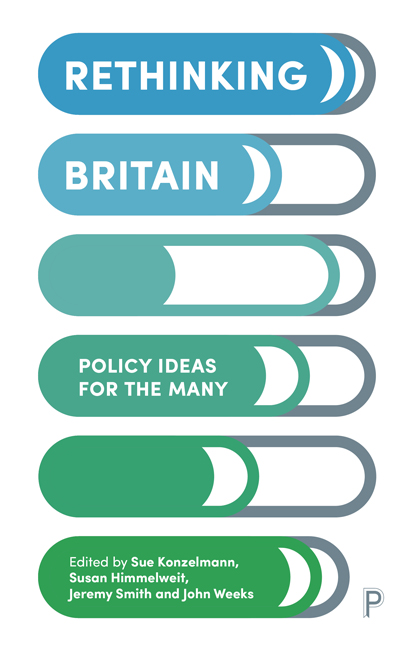Book contents
- Frontmatter
- Contents
- List of Tables and Figures
- The Contributors
- Foreword
- Introduction
- Interlude: ‘Mirror, Mirror, On the Wall – Who has the Highest Debt of All?’
- Part One Building a Full-Employment Economy: Introduction
- Part Two Public Investment – Prioritising Society Rather than Profit: Introduction
- Part Three Making Finance Work for Society: Introduction
- Part Four Genuine Social Security: Introduction
- Part Five How to provide for Social Needs: Introduction
- Conclusion
- Jargon Busters
- References and Further Reading
- Index
Interlude: What is ‘Social’ Infrastructure – and why does it Matter so much?
Published online by Cambridge University Press: 11 March 2021
- Frontmatter
- Contents
- List of Tables and Figures
- The Contributors
- Foreword
- Introduction
- Interlude: ‘Mirror, Mirror, On the Wall – Who has the Highest Debt of All?’
- Part One Building a Full-Employment Economy: Introduction
- Part Two Public Investment – Prioritising Society Rather than Profit: Introduction
- Part Three Making Finance Work for Society: Introduction
- Part Four Genuine Social Security: Introduction
- Part Five How to provide for Social Needs: Introduction
- Conclusion
- Jargon Busters
- References and Further Reading
- Index
Summary
We all know what infrastructure is; after all, we drive on roads and go to schools and hospitals pretty much every day. But what exactly is ‘social’ infrastructure?
One way to look at it is as the ‘software’ – like the transport, education, health and social care systems – that make us all able to live together. Social infrastructure is the collective contribution to our wellbeing, mostly provided by and for people but funded by the state, although exactly how varies from situation to situation. What it's good at is making life that bit easier and getting the best out of people. That means you’ll also really notice the hole it leaves when it's not there – and that's what happens when funding for it is cut.
By 2015, inequality in the UK had reached the point where the 100 richest people had as much wealth as 18 per cent of the entire population. Perhaps unsurprisingly, this also meant that some 14 million people – 4.5 million of them children – were now living below the poverty line. And public spending on their schools, their childcare and their housing had fallen too. That will seriously impact their life chances, making it very difficult for them to escape poverty for the rest of their lives. This makes a pretty strong case for investing collectively in things that will help them – and as a result, the economy – out.
However, instead of being invested in to help those struggling with poverty at critical stages, our social infrastructure has been rapidly hollowed out. Since the coalition government took office in 2010, public services, council funding, benefit entitlements, school budgets and student maintenance grants have all been cut.
Aside from the more obvious results – such as schools being able to provide far less help for children who fall behind – what does this poverty actually look like? In an interview with The Guardian in April 2018, the headteacher of a primary school in Nottingham made it clear that it was about rather more than not having ‘on-trend’ trainers:
- Type
- Chapter
- Information
- Rethinking BritainPolicy Ideas for the Many, pp. 178 - 179Publisher: Bristol University PressPrint publication year: 2019



